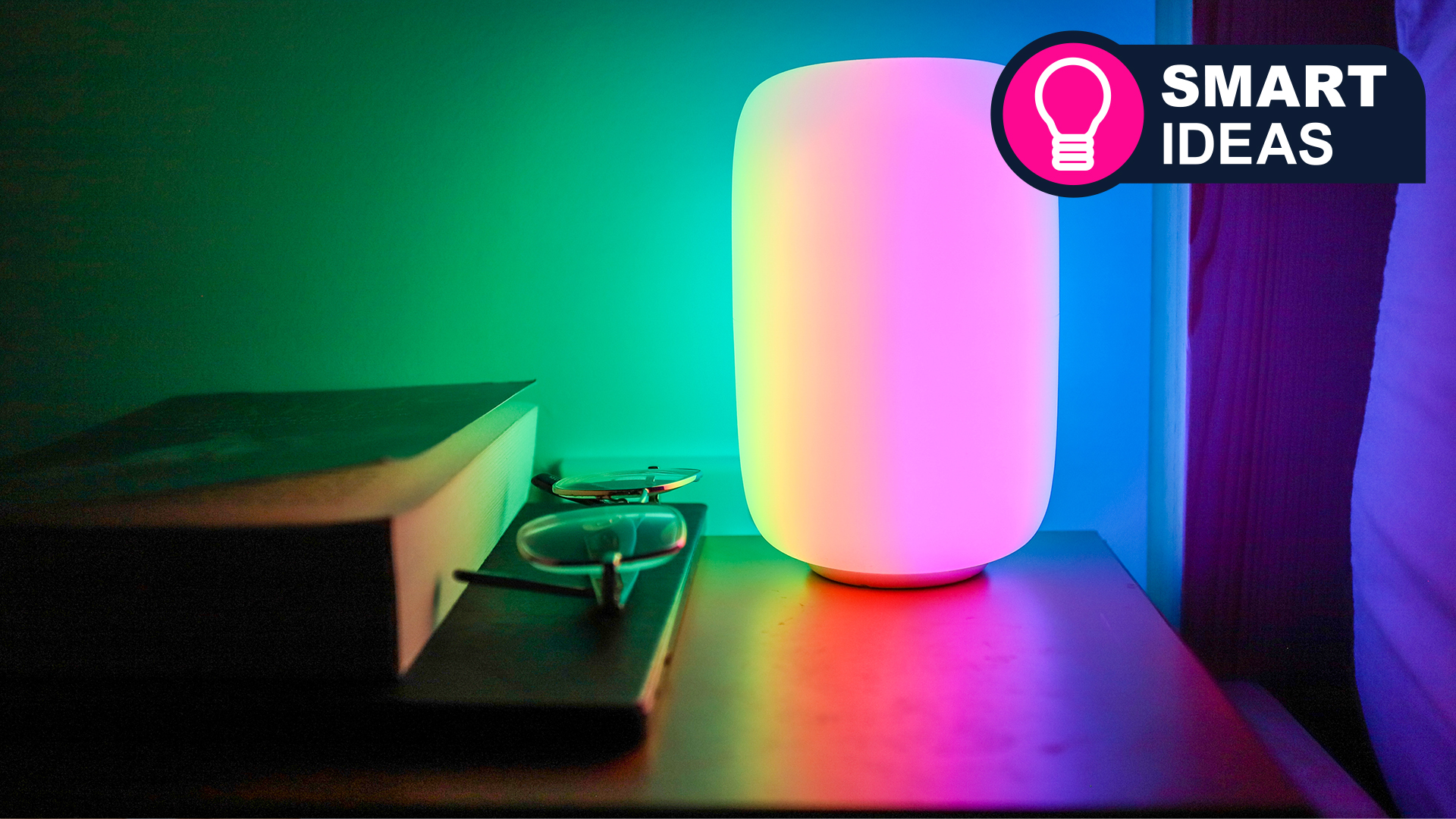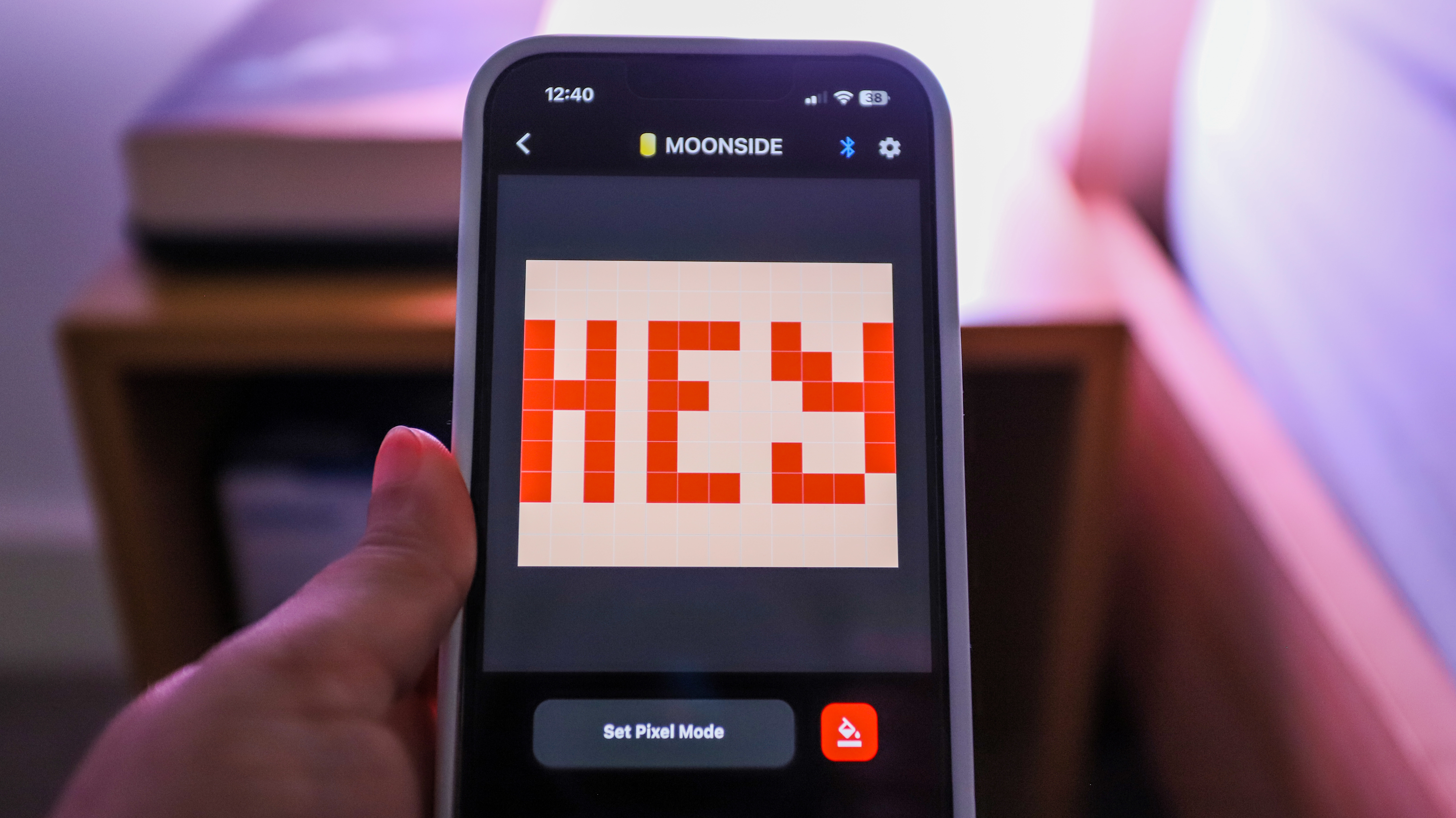Moonside's Lamp One has knocked the Philips Hue Go 2 off my bedside table
It's not perfect, but it's small and more versatile

When it comes to bedside lighting, we all have our personal preferences. Some prefer brighter lights to read by, others might be partial to something more subtle. The good news is that there are smart lights aplenty that will cater to both. The one thing most of them don't provide is the nostalgia of a lava lamp.
The Moonside Lamp One does.
This is the latest in a regular series of articles exploring smart tech that exists to make your life easier. Read them all here.
This is a small lamp that's so lightweight, I thought the box was empty when it first arrived. As soon you take it out of the box, the first impression you get is how plasticky it is, but that stopped bothering me the moment I turned it on.
It's also got a small footprint that made it perfect for my tiny bedside table where a Philips Hue Go 2 was doing a good job for a few years.
While the Hue Go is definitely brighter than the Moonside Lamp One, I'm quite fascinated by the color effects the little light is capable of. Where the Hue can handle solid colors only – with the sole exception of mimicking candlelight flickers – the Lamp One is capable of different effects, some of which emulate lava lamps. Admittedly the effect isn't a full replica of a lava lamp, but it comes close.
Like all smart lights, the Moonside Lamp One is easy to set up and use. Interestingly, it's powered by a USB-A to C cable, although Moonside Design will ship a power adaptor to match your country's needs in the box. This is handy as it means you can purchase this lamp directly from Moonside Design and use it anywhere in the world. If you live in the US, you can pick it up on Amazon for about $65.

Let there be (colorful) light
Unlike the Hue Go 2, the Lamp One needs to be connected to a power source at all times to work and it can easily be setup via Bluetooth.
Sign up for breaking news, reviews, opinion, top tech deals, and more.
The companion app – available for both Android and iOS – is quite minimal and it has some teething problems. It's not the most intuitive of apps and it takes a little while to figure everything out and the tutorials available are quite basic.
Other problems with the app are perhaps a little more annoying. For example, tapping on the Lamp One tile in the app should turn the light on or off, but that often fails and you have to repeat the action. The Lamp One is also supposed to respond to music but I have been unable to make that feature work.
However, one of the things I'm quite fascinated by is the Lamp One's Pixel Mode.

Color me impressed
It's the subtlest of things, but you can spell out little words on the app when you choose Pixel Mode – denoted by a tilted paint tin icon. So far I've only managed three-letter words and you can barely make them out on the lamp itself, but somehow I love playing around with it.
That said, it's not fully fleshed out as an idea on the app. There's no way to undo an action and neither is there a way to clear the grid to start from scratch again. My workaround was to use warm white light as my base, then use the more vivid colors to paint out a word. It's a little annoying but I haven't seen this feature before on any smart lamp I've tested so far, so I'm already a fan of this fun little feature.



If its the nostalgia of lava lamps you're after, you select the Theme mode and choose one of a handful of options that are already available on the app. If you want to save a few for easy access, just tap on the heart icon against any of the themes. Don't like the default options? You can create your own color combinations.
Of course, you can set the Lamp One to solid colors or choose different white light hues from warm to cold. There are some default options for the latter to choose from, but you are able to tweak any color to what you want it to be.
And no matter what light effect you choose, it displayed a full 360º, so you could make the Lamp One a living room side table feature piece if you wanted.
Not too smart, yet vivid and loveable

Don't expect the Moonside Lamp One to light up a whole room, it's not bright enough. It will suffice as a bedside lamp or an accent light on a shelf.
However, the colors it displays are quite vivid. They're made a little subtle due to the frosty white plastic body of the lamp, which I personally don't mind at all. I'm not really a fan of bright, vivid colors that I've experienced with the Nanoleaf Canvas and Nanoleaf Lines previously, so I'm glad some of that hard color is slightly muted.
There is Google Assistant, Alexa and IFTTT support on board, although you will need to create a Moonside account and use the Wi-Fi connectivity to take advantage of voice commands. And my biggest issue with this smart feature is how convoluted it is to set up. I gave up trying to connect it to my Google Home app after a few attempts and now don't mind controlling it by its app alone.
There's no Apple HomeKit support at the time of writing, but Moonside Design says that it's "coming soon".
Despite its shortcomings, there's a lot to love about the Moonside Lamp One. It's one of the more versatile smart lights I've tested, although there is room for improvement here.
You might also like
- Our pick of the best smart home devices to use right now
- Dyson Solarcycle Morph Desk review: a show-stopping lamp that'll last 60 years
- The best smart lights available right now

While she's happiest with a camera in her hand, Sharmishta's main priority is being TechRadar's APAC Managing Editor, looking after the day-to-day functioning of the Australian, New Zealand and Singapore editions of the site, steering everything from news and reviews to ecommerce content like deals and coupon codes. While she loves reviewing cameras and lenses when she can, she's also an avid reader and has become quite the expert on ereaders and E Ink writing tablets, having appeared on Singaporean radio to talk about these underrated devices. Other than her duties at TechRadar, she's also the Managing Editor of the Australian edition of Digital Camera World, and writes for Tom's Guide and T3.